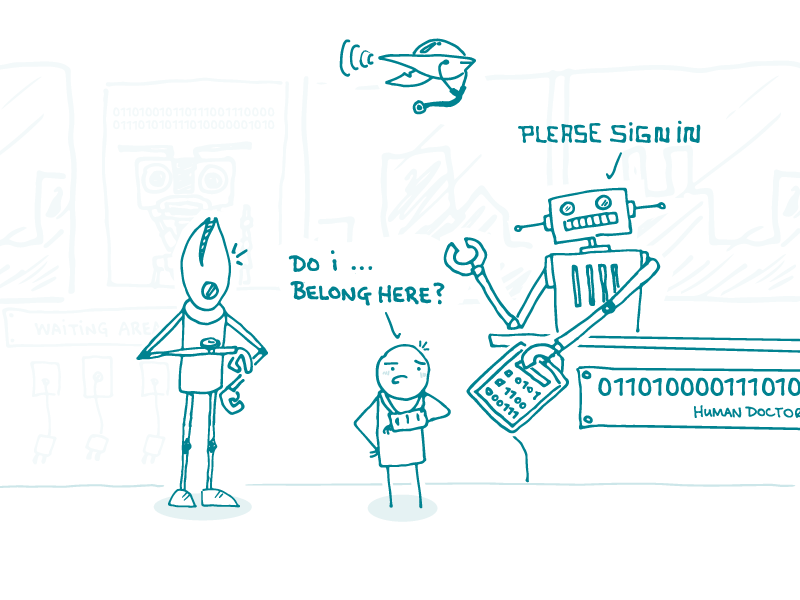
Have you ever met someone and just clicked with them right away? Don’t you love that feeling of instant understanding and connection?
Well today, dear readers, we’re talking about a different kind of first impression — the first impression your health content makes on your users. If you go to a new health website and you’re greeted by gobs of confusing information and TEXT IN ALL CAPS, it doesn’t make for a great first impression.
But an especially nasty type of bad first impression in health communication is due to a lack of cultural competence. We’ll sum that term up like this: cultural competence is the ability to meet patients’ social, cultural, and language needs.
So what does a cultural competence fail look like? Imagine a non-binary person going to a new doctor and filling out an intake form with only 2 checkboxes: “female” and “male.” Not only could that make them feel invisible, it might cause them to doubt the quality of care they’ll get — and rightly so. So how could the doctor’s office make a better first impression? Easy! By making the intake form inclusive and welcoming for everyone.
First impressions aren’t just about words — design matters, too. Picture this: a black woman searches online for information about breastfeeding. On the first site she visits, all the images show white parents and babies. She may wonder if the information is really for her, and she’ll likely move on to a site that makes her feel represented and included.
So don’t get off on the wrong foot with users! You can start learning about cultural competence at HRSA’s Culture, Language, and Health Literacy site. But you can’t just read about cultural competence and be done with it — it’s a continuous process of checking in with your audience (and yourself) to make sure you’re not making harmful assumptions or missing important cultural context.
When you’re assessing your materials for cultural competence, ask yourself questions like:
- Who am I trying to reach?
- What do I know about my audience’s culture, language, and beliefs?
- How can I get feedback from my audience to make sure I’m on track?
Improving cultural competence can go a long way toward creating health content that makes a great first impression — and starts a healthy, lasting relationship with your audience.
(Also, if you’re looking for a beach read, the We ❤ Health Literacy Book Club really enjoyed Anne Fadiman’s The Spirit Catches You and You Fall Down. It touches on some of this good stuff — check it out!)
The bottom line: Brush up on cultural competence to make a better first impression in your health materials.
Browse recent posts